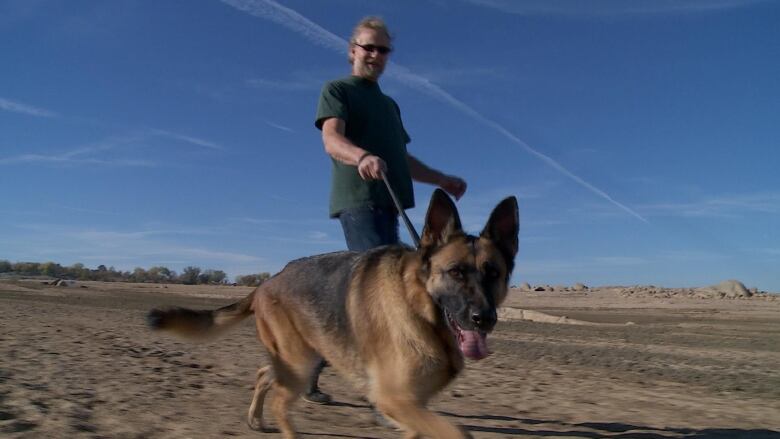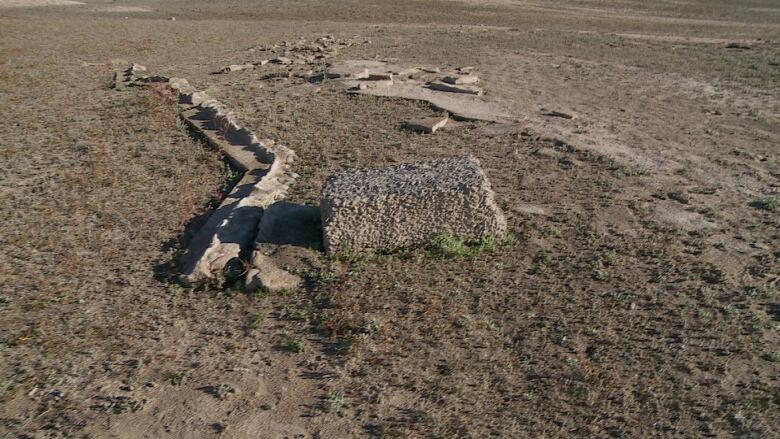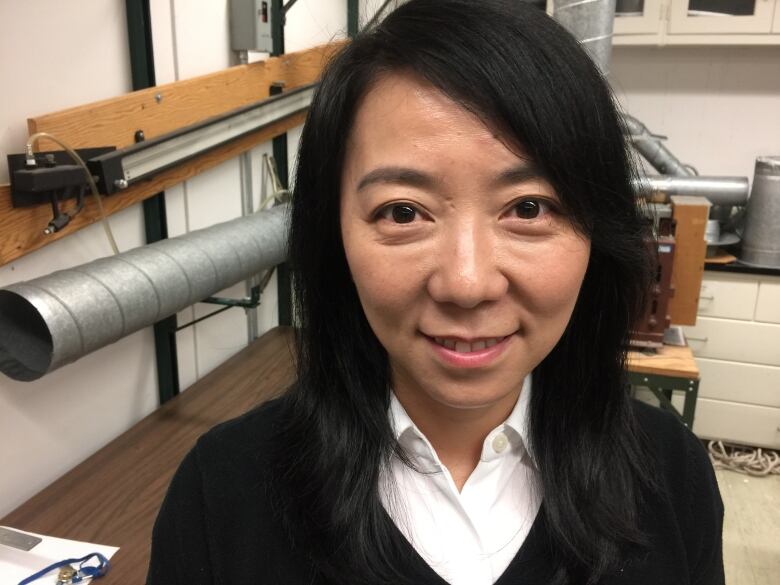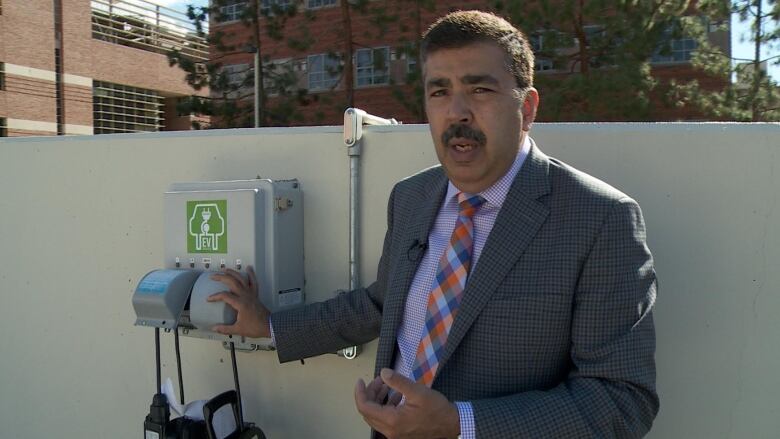California's vanishing lakes are a climate change cautionary tale
State's response through regulation and innovation considered a model
This column is part of apackage of special coverageof climate change issues by CBC News leading up to the United Nations climate change conference (COP21) being heldin Paris from Nov. 30 to Dec. 11.
Mark Mellinger is trudging along the dry, sandy plain looking for his great-great-granny.
"There's graves around here," Mellinger says. "Somewhere between Mormon Island and over here, we just don't know where."
Finding her grave would have been been impossible until now because it would have been deep underwater.
In the 1950s when the reservoir at Folsom Lake, near Sacramento, Calif., was built, an old mining town was submerged. It's now re-surfacing because more than 85 percent of the water in the lake has vanished. It looks like a giant bath in which someone pulled the plug.

"It's incredible actually," Mellinger says. "I've been around this whole area forever and I've never seen it this low."
Not long ago, people used to swim here. A posted sign still warns visitors there's no lifeguard on duty. Instead, it's become a popular dog-walking destination. Laurie Hershey is taking her terrier Cricket for a stroll on the bottom of the lake, something she's never done in her 30 years in the area.

"It's unbelievable," Hershey says as Cricket digs a hole in the sand. "Never seen anything like this. It's frightening."
"It kind of looks like the moon or Mars or a movie set," says Shane Hunt, who works for the U.S. Bureau of Reclamation,which regulates the reservoir. He says last week the lake set a record for the lowest water level ever recorded.
We head out from the spot where the lake used to start.It takes 15 minutes from the edge of the lake to reach the remaining water. It looks more like an oasis than a lake.
Glimpse of a warming planet
Because of California's record drought, lakes and rivers across the state are shrinking. And what residents are witnessing at Folsom Lake, experts say, could be a glimpse into the future for many cities across a warming planet.
"We hear people talk about this potentially being the new normal," Hunt says.

But if California's providing a picture of what climate change looks like, the state's also pioneering new ways to fight it.
"Relax.This is California," says Bill Patzertwith NASA's Jet Propulsion Laboratory. "This is the tech centre of the universe.We're about ready to become one of the water efficiency centres in the Northern Hemisphere.Californians are coming up with more and more innovative high-tech ways to practise water efficiency up and down the state."
- From deep freeze to drought: 10 extreme weather events
- California drought sees cities filtering water from sewage
- Dying California forests offer a glimpse into climate change
UCLA pollution researcher Yifang Zhu travels around the world to share the Southern California success story. Fortyyears ago, L.A. smog was so bad the air would literally make you cry.

But over the last several decades, California has enacted the most stringent regulations to limit pollution and greenhouse gases in the country.
"It's really controlling every single aspect they can control," Zhu says. "It's down to the details like trying to improve the glass quality in cars, so cars will stay cooler. They're also regulating volatile organic compound emissions from baby wipes. So it's the little things, but it adds up. So there are many lessons that can be shared."
That's why over the last 40 years, air pollutionhasdropped more than 75 per cent.
"That may not sound that dramatic," Zhu says, "but during that 40-yearperiod, the population almost tripled, and the vehicle miles almost tripled in Los Angeles. So all of this dramatic pollution reduction happened at the same time of dramatic population growth and economic development."

California's secret?
"I feel that one thing that makes Southern California special is that the scientific community and the policy decision makers really discuss with each other, talk to each other and make decisions hand in hand," Zhu says. "So that the policies that are coming out from this effort are backed up by sound scientific evidence."
And by cutting edge technology.
Messy, amazing innovation
Tucked away in UCLA's engineering school is a lab the size of a large living room. Wires creep across almost every surface like ivy. I tell the man who runs the lab that it looks like a mad scientist's lair.
"That is because it is," says a smiling Rajit Gadh as he untangles several wires. He admits it looks more like a tinkerer's garage than a high-tech lab, but this is what innovation actually looks like: half messy, half amazing.
Gadh demonstrates a handful of inventions designed to reduce emissions: everything from brick-sized batteries that store solar energy to smart appliances that sell power back to the grid.

Most of the products are still in development, but one invention may already be heading to a parking lot near you: a station that can charge several electric cars with just one outlet.
"This is called a round-robin algorithm," Gadh says, standing next to a row of electric cars plugged into the station. "So right now it's charging that car," he says pointing to aChevy Volt, "because that car needs energy, and then it'll figure out whom to charge next. And how much time each car gets and when each car gets its turn in the queue depends on your needs and how much energy the grid operator has."

There are dozens of inventions to help manage climate change, and this is all from just one small California lab. But all the technology in the world is useless, Gadh says, if people don't actually use it.
"There's an entire aspect of consumer participation, consumer fatigue, incentivization," Gadh says.
"We are literally at the ground floor of the smart grid research. I think we have a long way to go, so we're just starting up."














_(720p).jpg)


 OFFICIAL HD MUSIC VIDEO.jpg)
.jpg)



























































































